Indian Spice War
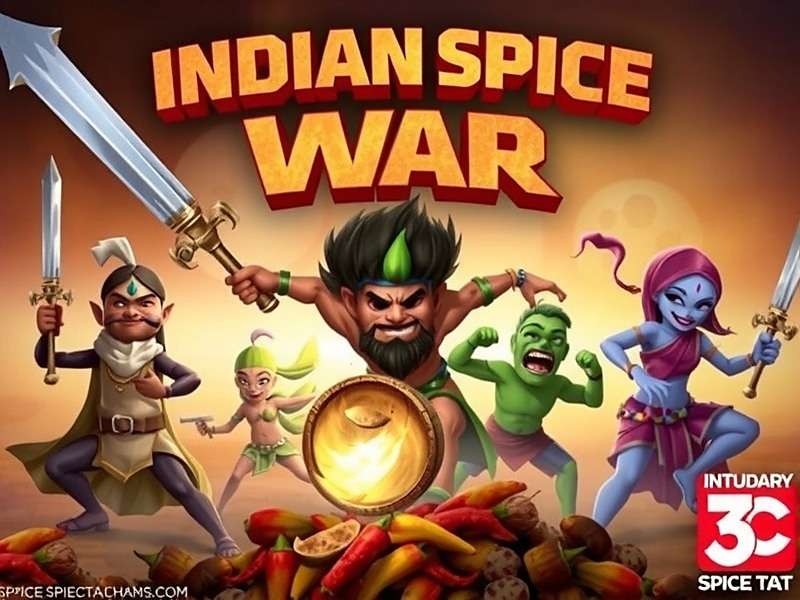
About Indian Spice War
Indian Spice War is India's groundbreaking strategy game that brings the vibrant, aromatic world of Indian spices to life in an epic battle for culinary dominance. Launched in 2022 by a team of passionate developers from Bangalore, this game has taken the Indian gaming community by storm with its unique blend of history, strategy, and cultural celebration.
The concept is both innovative and deeply rooted in Indian culture: players command armies of anthropomorphic spices, each with unique abilities and characteristics, in strategic battles set across ancient India's diverse landscapes. From the lush green fields of Kerala to the arid deserts of Rajasthan, every region offers distinct challenges and opportunities.
💡 Did you know? The idea for Indian Spice War came to the lead developer during a family dinner where his grandmother was explaining how different spices "fight" for dominance in traditional Indian dishes. This culinary metaphor became the foundation for the entire game!
What truly distinguishes Indian Spice War from other strategy games is its deep respect for Indian culinary heritage. The development team worked with spice experts, historians, and chefs from across India to ensure each spice character accurately reflects its real-world properties, historical significance, and regional associations.
Available for Android, iOS, and Windows platforms, Indian Spice War isn't just entertaining—it's educational. Players learn about India's rich spice trading history, regional culinary traditions, and even medicinal properties of different spices while enjoying strategic gameplay.
With regular updates introducing new spice characters, historical battlefields, and seasonal events tied to Indian festivals, Indian Spice War continues to grow while staying true to its cultural roots. It's more than a game; it's a celebration of India's most valuable culinary treasures.
The game's universe expands beyond simple battles, incorporating elements of trade, diplomacy, and empire-building that mirror India's historical spice routes and kingdoms. Whether you're a casual gamer or a strategy enthusiast, Indian Spice War offers something uniquely Indian and thoroughly engaging.
Gameplay of Indian Spice War
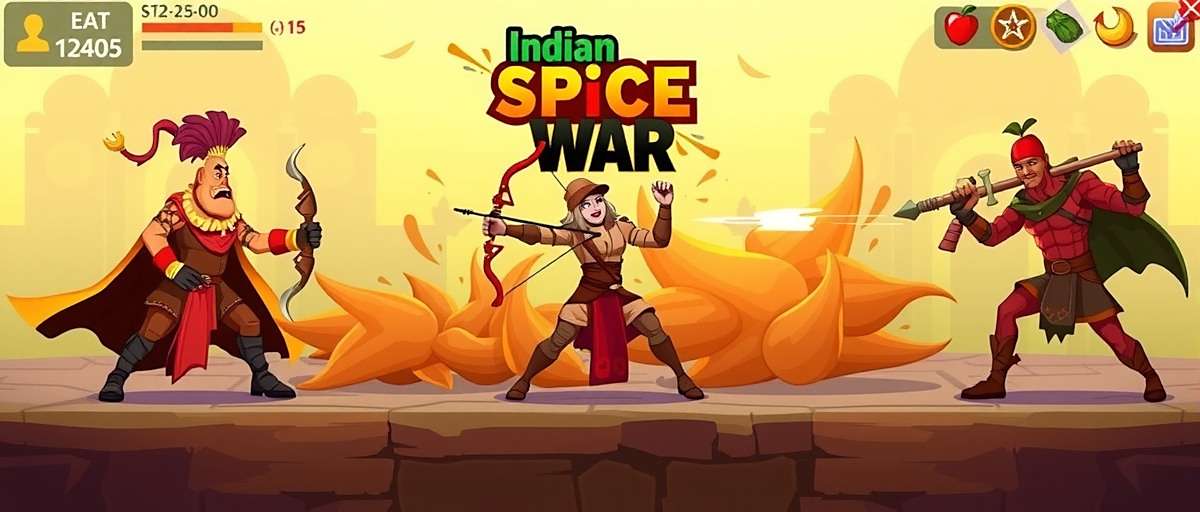
Core Mechanics
In Indian Spice War, players take on the role of a Spice Lord tasked with building and commanding an army of spice warriors to conquer territories and establish culinary dominance across the Indian subcontinent.
Each spice in Indian Spice War possesses unique attributes based on its real-world properties. For example, Turmeric acts as a healer with protective abilities (reflecting its antioxidant properties), while Chili Pepper units deal high damage with fiery attacks. Cumin serves as scouts with stealth capabilities, and Cardamom provides strategic buffs to nearby allies.
Battles take place on intricately designed maps representing different regions of India. Victory requires careful planning, as terrain types affect different spices differently—for instance, Curry Leaf archers gain bonuses in forested areas, while Mustard Seed cavalry excels in open plains.
Resource management is crucial in Indian Spice War. Players must cultivate spice plantations, establish trade routes, and manage warehouses to ensure a steady supply of troops and upgrades. The game's economy mirrors historical spice trading systems, adding an extra layer of strategic depth.
Progression System
As you conquer territories in Indian Spice War, you earn "Saffron Points" and "Spice Glory" that unlock new spice types, special abilities, and legendary warriors. Starting with basic spices like Turmeric and Chili, you'll eventually gain access to rare and powerful spices like Saffron, Asafoetida, and Mace.
Each region you conquer in Indian Spice War unlocks unique regional spices and battlefield advantages. Capture Kerala to gain access to Black Pepper elites, or control Kashmir to recruit Saffron healers with enhanced abilities.
Players can upgrade their spice warriors through a detailed progression tree that allows specialization based on play style. Whether you prefer aggressive offensive strategies, defensive formations, or diplomatic approaches, the game accommodates multiple play styles.
Legendary spice warriors, based on historical figures from India's spice trading history, can be unlocked through special quests and achievements. These powerful characters can turn the tide of battle with their unique special abilities.
Game Modes
Indian Spice War offers multiple game modes to keep players engaged:
Campaign Mode takes players on an epic journey through India's history, recreating famous battles and trade conflicts from ancient times to the Mughal era. Each campaign chapter focuses on a different region and its signature spices.
Multiplayer Battles allow players to compete against friends and strangers in real-time strategic combat. With ranking systems and seasonal leagues, there's always incentive to improve your battle tactics.
Alliance Wars enable players to form alliances with other Spice Lords, combining their armies to take on massive cooperative challenges and compete against rival alliances for control of valuable spice routes.
Free Play Mode lets players experiment with different strategies without constraints, perfect for testing new army compositions or practicing against AI opponents of varying difficulty levels.
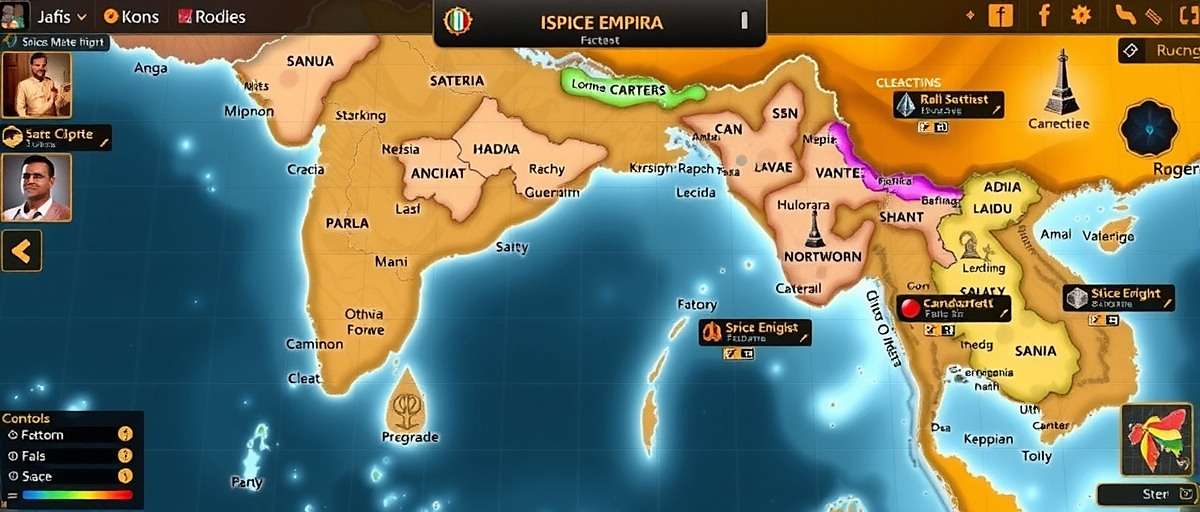
Special Features
The Spice Fusion system allows players to combine certain spices to create powerful hybrid warriors with combined abilities—for example, mixing Ginger and Garlic creates a fearsome frontline warrior with both offensive and defensive capabilities.
Culinary Quests add an educational dimension to Indian Spice War. Completing these special missions teaches players about the historical uses, medicinal properties, and cultural significance of different spices, with interesting facts presented in an engaging manner.
The Marketplace is a dynamic in-game economy where players can trade spices, artifacts, and resources with each other. Prices fluctuate based on supply and demand, mirroring real-world commodity markets and adding another strategic layer to the game.
Weather and seasonal effects play a significant role in battles, with monsoon rains boosting the power of water-based spices like Cardamom, while dry seasons enhance fire-aligned spices like Chili and Clove.
Spice Characters in Indian Spice War
One of the most beloved aspects of Indian Spice War is its rich roster of spice characters, each with distinct personalities, abilities, and backstories rooted in Indian culture and history.
Common Spices (Basic Units)
Turmeric Guard – The backbone of many armies, these sturdy warriors wear golden armor and wield staffs. They excel at defense and can heal nearby allies with their restorative aura. Their battle cry "Haldi ki shakti!" (Power of Turmeric!) inspires courage in fellow troops.
Chili Archer – Agile and fiery-tempered, these units rain down explosive arrows on enemies. Their special "Flame Volley" attack can ignite enemy positions. Known for their hot tempers and catchy battle cries in Telugu and Tamil.
Cumin Scout – Masters of stealth and reconnaissance, these units can move unseen behind enemy lines. Their ability to detect ambushes and sabotage supply lines makes them invaluable for strategic operations. They communicate in whispered Punjabi phrases.
Coriander Healer – Gentle but effective, these units specialize in mid-battle healing. Their "Fresh Breeze" ability can dispel negative effects from allies. They carry small satchels of coriander seeds that they sprinkle during healing rituals.
Regional Specialists
Black Pepper Elite (Kerala) – Hailing from the Malabar coast, these heavy infantry warriors wield spiked maces that can penetrate even the strongest armor. Their "Pepper Storm" ability blinds enemies temporarily, reflecting the pungent nature of black pepper.
Saffron Sage (Kashmir) – Rare and powerful, these units from the valleys of Kashmir can turn the tide of battle with their "Golden Aura" that enhances all nearby allies. They move slowly but are highly respected by all other spice warriors.
Mustard Cavalry (Punjab) – Swift mounted units from the fertile plains of Punjab, they excel at hit-and-run tactics. Their "Mustard Charge" ability leaves a trail of burning ground that damages pursuing enemies.
Asafoetida Summoner (Gujarat) – These mysterious units from Western India can summon powerful spirits to fight alongside them. Their pungent presence weakens enemy morale, making them effective against large groups.
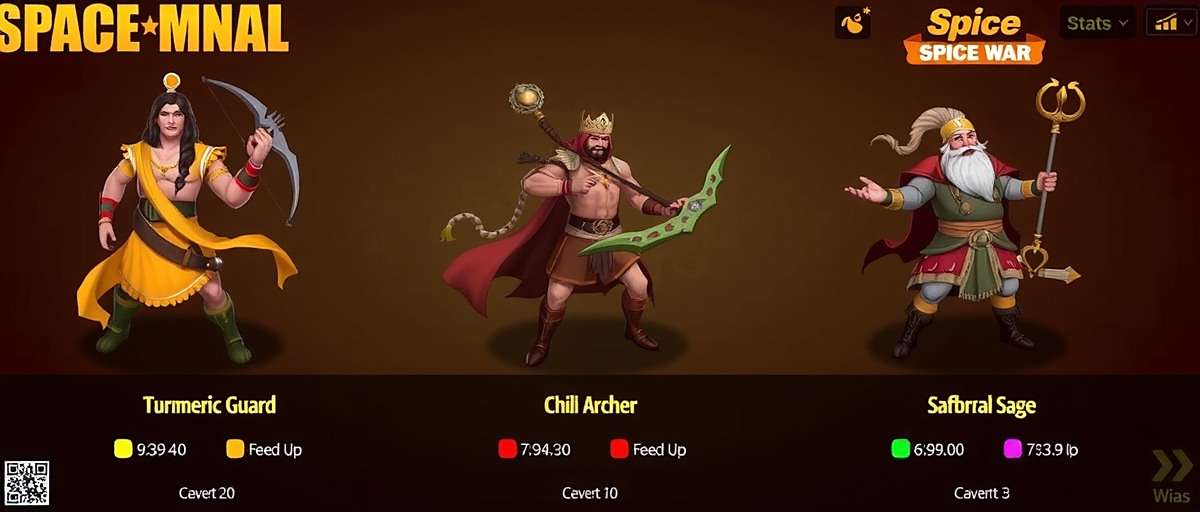
Legendary Spice Lords
Emperor Cardamom – Based on the great Mughal emperors, this legendary ruler commands respect from all spices. His "Royal Decree" ability can temporarily unite even rival spice factions under his command.
Queen Clove – Inspired by the warrior queens of South India, this fierce leader specializes in defensive strategies. Her "Clove Fortress" ability creates an impenetrable barrier that protects allies from enemy attacks.
General Ginger – A wise and experienced leader from Northeast India, known for his clever tactics and surprise attacks. His "Ginger Charge" ability allows him to break through enemy lines and disrupt their formations.
Mystic Mint – A enigmatic figure from the Himalayan regions, this legendary healer can revive fallen allies and purify areas contaminated by enemy forces. Her calming presence reduces ally fatigue in prolonged battles.
Mythical Spice Beasts
As players progress in Indian Spice War, they can unlock powerful mythical creatures based on ancient Indian folklore, each associated with specific spice families:
The Garlic Naga – A serpentine creature with multiple heads, each breathing a different type of gas that confuses and weakens enemies. It takes hours of gameplay to unlock this powerful beast.
Cinnamon Phoenix – A majestic bird that can rise from its own ashes, symbolizing the regenerative properties of cinnamon. Its fiery wings can incinerate enemy formations but also heal friendly units.
Curry Leaf Griffin – A powerful creature with the body of a lion and the wings of an eagle, covered in aromatic curry leaves. Its roar can boost ally morale while striking fear into enemy forces.
Download Statistics for Indian Spice War
📱 Total Downloads in India: 68 million+ (as of 2024)
🌍 Global Downloads: 85 million+
📊 Monthly Active Users in India: 9.7 million
⭐ Average Rating: 4.7/5 across all platforms
📅 Highest Daily Active Users: 2.8 million (during Holi 2024 event)
🕒 Average Daily Playtime: 42 minutes per user
Indian Spice War has achieved phenomenal success since its launch, consistently ranking in the Top 3 Strategy Games on both Google Play Store and Apple App Store in India. Its unique blend of cultural elements and strategic gameplay has resonated strongly with Indian gamers.
The game's popularity spans all age groups, with 58% of players between 18-35 years old, 27% between 36-50, and 15% above 50. This broad appeal can be attributed to its educational elements and connection to Indian heritage, which appeals to both younger gamers and older players familiar with traditional spice knowledge.
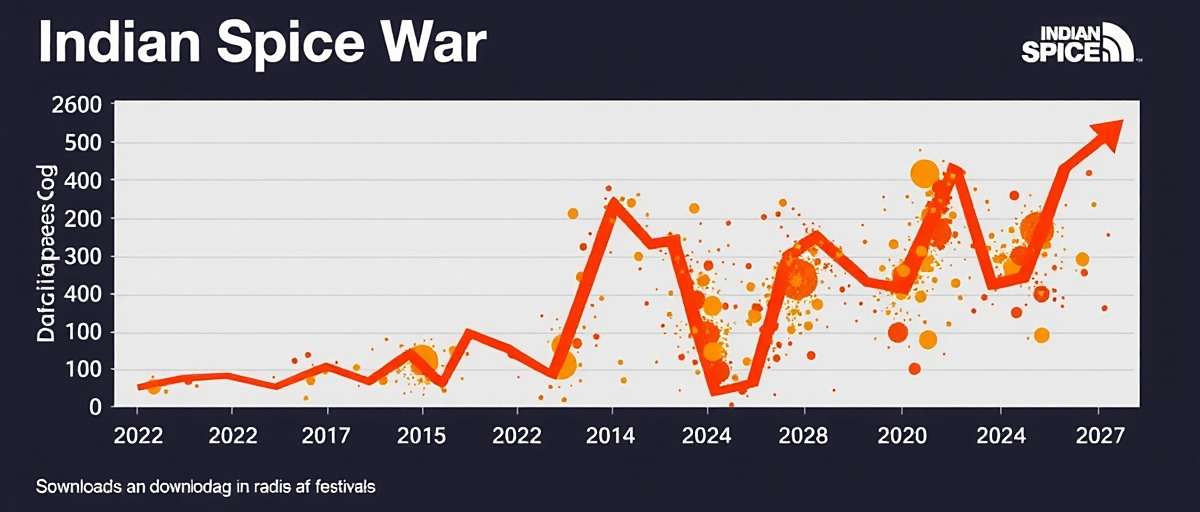
Regional data shows that Indian Spice War is most popular in Maharashtra, Karnataka, Tamil Nadu, Uttar Pradesh, and West Bengal. However, the game has enthusiastic players in every state, with regional spice characters and battlefields creating strong connections with local audiences.
Downloads typically surge during major Indian festivals when the game releases special event content. The 2023 Diwali event saw a 52% increase in new users, while the 2024 Holi "Color of Spices" update resulted in over 2.5 million new downloads in just one week.
Android devices account for approximately 81% of Indian Spice War downloads, reflecting India's mobile market trends, but the iOS version has a higher average revenue per user. The Windows version, though smaller in user base, has the most dedicated players with the longest average play sessions.
Player retention is a particular strength of Indian Spice War, with 67% of players still active 30 days after download, significantly higher than the industry average of 42% for strategy games. This high retention rate is attributed to regular content updates and the game's deep connection to Indian culture.
Player Reviews of Indian Spice War
Players across India have embraced Indian Spice War with tremendous enthusiasm. Here's what some of them have to say about their experiences with the game:
"Indian Spice War brings back so many memories of my grandmother telling stories while cooking! I never thought I'd get excited about turmeric and cardamom, but now I'm strategizing about them for hours daily. The attention to regional details is amazing - as a Bengali, I was thrilled to see the Panch Phoron squad accurately represented!"
— Arnab, 34, Kolkata
"My 12-year-old son and I play Indian Spice War together every evening. It's become our bonding activity! What I love most is that he's actually learning about Indian spices and their uses while playing. Last week, he asked me to teach him how to cook with mustard seeds because he unlocked the Mustard Cavalry in the game. Incredible!"
— Sunita, 45, Ahmedabad

"As a strategy game enthusiast, I've played all the big titles, but Indian Spice War feels refreshingly different. The spice-based mechanics are ingenious - who would have thought that asafoetida could be such a game-changer in battles? The regional maps are beautifully designed, and I appreciate how they've incorporated actual historical trade routes into the gameplay."
— Rajiv, 29, Bangalore
"I've been playing Indian Spice War since launch, and what keeps me coming back is the regular content updates. The festival events are especially enjoyable - the Holi color battles were spectacular! I also love that they keep adding new regional spices. As someone from Kerala, I was so proud when they introduced the Black Pepper Elite units with authentic Malabar characteristics."
— Anjali, 27, Kochi
"Indian Spice War has helped me connect with my roots. Working abroad for 10 years, I'd forgotten so much about Indian regional spices. Playing this game has reintroduced me to our culinary heritage, and I've even started experimenting with new recipes in my kitchen. The educational facts about each spice are fascinating and accurate!"
— Vikram, 41, Dubai (originally from Delhi)
"The multiplayer alliance system in Indian Spice War is brilliant. Our alliance 'Spice Traders of Bharat' has members from all over India. We coordinate attacks using WhatsApp, and it's amazing how we've bonded over our love for the game. During last year's Diwali event, we even sent each other traditional sweets from our regions! This game builds real community."
— Priyanka, 31, Hyderabad
While the majority of reviews are highly positive, some players have noted that the learning curve can be steep for new players. In response, the developers introduced a more comprehensive tutorial system and "Spice Academy" mode where new players can practice different strategies against AI opponents.
Another common piece of feedback was the desire for more female spice characters, which the development team addressed in the 2023 "Women of Spice" update that introduced several new female legendary warriors based on historical Indian women who played important roles in spice trade and diplomacy.
Localization and Regional Versions of Indian Spice War
One of Indian Spice War's greatest strengths is its extensive localization, making it feel authentic to players across India's diverse linguistic and cultural landscape. Unlike many games that offer a one-size-fits-all experience, Indian Spice War celebrates India's diversity through its region-specific content.
Language Support
Indian Spice War is available in 18 Indian languages, including Hindi, Bengali, Tamil, Telugu, Marathi, Gujarati, Kannada, Malayalam, Punjabi, Odia, Urdu, Assamese, Kashmiri, Nepali, Konkani, Manipuri, Sindhi, and Sanskrit. This extensive language support ensures that players from all linguistic backgrounds can enjoy the game in their mother tongue.
The localization goes far beyond simple translation. For example, in the Punjabi version, battle cries and unit commands use authentic Punjabi warrior terminology, while the Tamil version incorporates ancient Tamil words related to spices and warfare from classical literature.
Voice acting for regional spice characters is performed by native speakers, with appropriate regional accents and dialects. The Black Pepper Elite units from Kerala, for instance, speak in the distinctive Malabar dialect of Malayalam, adding another layer of authenticity.
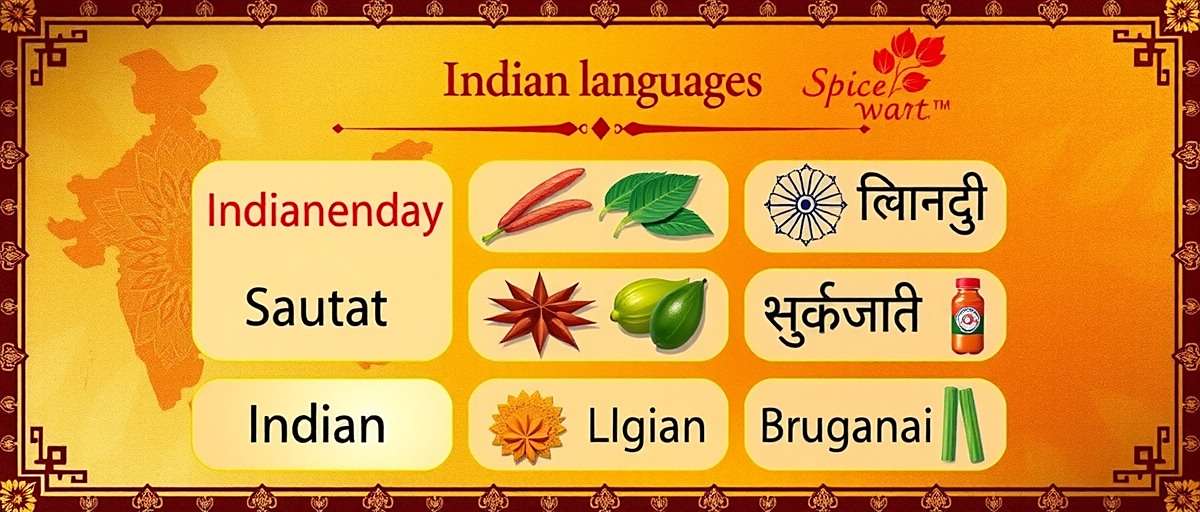
Regional Content Variations
Indian Spice War features region-specific content that changes based on the player's location, creating a personalized experience that resonates with local players:
In North India, players start with Turmeric and Ginger units, reflecting these spices' prominence in North Indian cuisine. The initial battlefield is modeled after the fertile plains of the Ganges, with appropriate vegetation and climate effects.
South Indian players begin with Black Pepper and Cardamom units, with their first battles taking place in terrain resembling the Western Ghats. The architecture in South Indian maps features distinctive Dravidian styles, with temple-inspired strongholds.
East Indian versions emphasize Mustard and Panch Phoron spice combinations, with maps featuring the lush delta regions and river systems characteristic of Bengal and Odisha. Rain effects are more prominent in these versions, reflecting the region's climate.
West Indian players start with Asafoetida and Cumin units, with desert and coastal battlefields representing Gujarat and Rajasthan. These versions include special sandstorm events that affect gameplay in unique ways.
Festival and Seasonal Events
Indian Spice War hosts elaborate events tied to Indian festivals, each with unique gameplay mechanics and rewards:
The Holi Event transforms battlefields with vibrant colors that boost certain spice abilities. Turmeric units gain enhanced healing powers, while Saffron characters create colorful auras that damage enemies.
During Diwali, the game features "Lamp Battles" where players must protect sacred oil lamps from enemy forces. Winning these battles rewards players with special "Diya Spices" that can be used to summon powerful legendary warriors.
The Eid Special introduces unique spice combinations inspired by Mughal cuisine, with special trading events that mirror historical spice exchanges during festival times. Players can earn rare saffron and cardamom resources during this period.
Pongal celebrations in the Tamil version feature rice-based challenges and rewards, while Onam events in Kerala introduce boat battle mechanics on backwater-inspired maps.
These events not only increase player engagement but also educate users about different regional celebrations and their associated culinary traditions, making Indian Spice War both entertaining and informative.
Indian Player Strategies for Indian Spice War
Indian players have developed sophisticated strategies for mastering Indian Spice War, often drawing on their real-life knowledge of spices and regional cooking traditions. Here are some expert tips from top-ranked players across India:
Army Composition Strategies
"The key to victory in Indian Spice War is understanding regional spice synergies," advises Sanjay from Chennai, a top 10 ranked player. "In South India maps, always pair Black Pepper elites with Cardamom healers - their combined 'Aromatic Barrage' can decimate enemy defenses while keeping your front line strong."
Many North Indian players swear by the "Golden Shield" formation: a front line of Turmeric Guards with Ginger shock troops flanking them, supported by Cumin scouts to prevent ambushes. This formation is particularly effective in the plains of Uttar Pradesh and Punjab maps.
For desert battles in Rajasthan maps, experienced players recommend a "Sand Storm" strategy using Asafoetida summoners to create confusion, followed by swift Mustard Cavalry charges. The dry conditions boost both these spice types' abilities by 30%.
East Indian players have developed the "Delta Defense" strategy that uses water-based spices like Coriander and Fenugreek in conjunction with terrain advantages near rivers. This setup can repel much larger armies through clever use of healing and hit-and-run tactics.
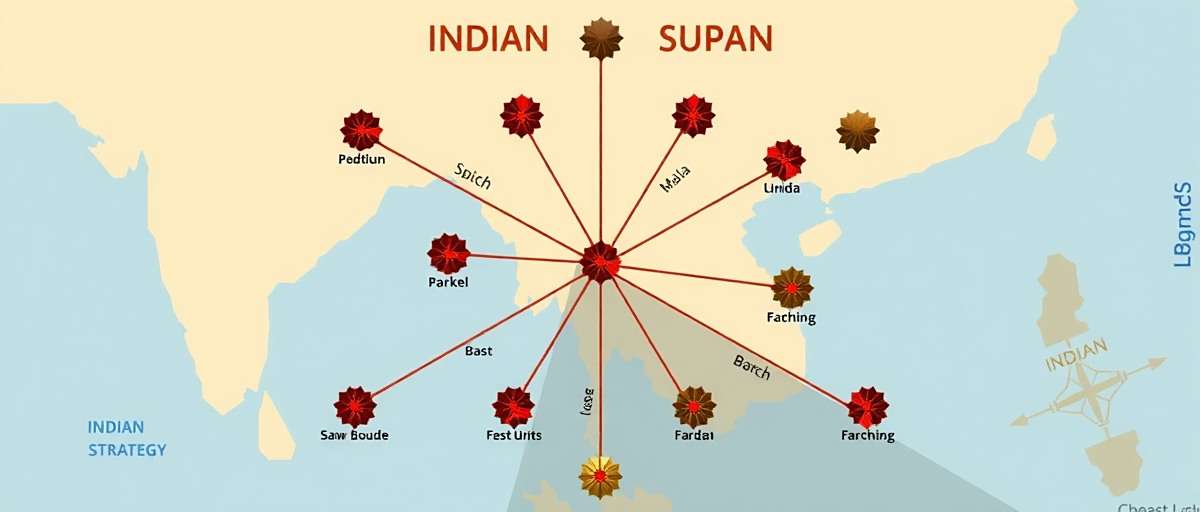
Resource Management
"Resource management in Indian Spice War mirrors real spice trading," explains Aisha from Hyderabad, a champion alliance leader. "I follow the 'Spice Route' method - focus on cultivating spices native to your starting region first, then trade for others through the marketplace. This is how our ancestors built spice empires, and it works in the game too!"
Top players recommend upgrading your main spice plantation to level 5 before expanding to other resources. This provides a steady income that can support more aggressive expansion later in the game.
During monsoon seasons in the game, it's wise to stockpile dry spices like Cumin and Fenugreek, as their production will increase while fresh spices may suffer from excess moisture penalties.
Many successful players use a "3-2-1" ratio for resource allocation: 3 parts spice production, 2 parts army training, and 1 part research. This balanced approach ensures steady progress without leaving your territories vulnerable to attack.
Festival Event Tactics
"Festival events in Indian Spice War require specialized strategies," says Mohan from Jaipur, a multiple event champion. "For Holi, I always prioritize Turmeric units - their color-based attacks gain 50% more power during the event. I also save up Saffron Points specifically for festival-exclusive upgrades."
Diwali events favor defensive strategies, with players who invest in stronghold upgrades and healing units consistently performing better. The bonus lamps provide powerful buffs to nearby defenses, so clustering your strongest units around them creates nearly impenetrable positions.
For the Ramadan event, players recommend focusing on trade and diplomacy rather than direct conflict. The event bonuses for successful spice trades are significantly increased, allowing savvy players to accumulate resources that can be used for massive army builds once the event concludes.
Regional festival events often require knowledge of local traditions. For example, during Pongal, rice-based resource production is doubled, so players should temporarily shift their economy to take advantage of this boost before returning to their normal strategy.
💡 Pro Tip: Study real Indian spice combinations when planning your armies! The same principles that make certain spices work well together in cooking apply in Indian Spice War. For example, the classic tempering combination of mustard, cumin, and fenugreek (used across India) creates a devastating trio in battle with complementary abilities!
Alliance Warfare
Successful alliance leaders in Indian Spice War emphasize the importance of regional specialization within the alliance. Having members from different parts of India who specialize in their regional spices creates a well-rounded alliance capable of handling any situation.
Communication is key, with top alliances using a combination of in-game chat and external messaging apps to coordinate attacks. Many alliances schedule their major offensives around Indian Standard Time to ensure maximum participation from members across different time zones.
Resource sharing within alliances follows traditional Indian concepts of "annadaan" (food giving), with stronger members supporting newer ones with essential spices during their early development. This builds loyalty and creates a stronger alliance overall.
Alliance wars require careful planning of "spice caravans" - coordinated supply lines that ensure attacking forces have the necessary resources to maintain momentum. Disrupting an opponent's spice caravans is often more effective than direct attacks on their armies.
Community and Events for Indian Spice War
The Indian Spice War community in India is vibrant and highly engaged, with players connecting both in-game and through various social platforms. This strong community spirit has helped the game maintain its popularity and grow continuously since launch.
Online Communities
Facebook groups dedicated to Indian Spice War have a combined membership of over 4.2 million players. These groups serve as hubs for sharing strategies, organizing alliance recruitment, and discussing new updates. The largest group, "Spice Warriors of India," has over 1.8 million members.
On YouTube, there are over 1,200 active channels creating Indian Spice War content, with the top channels boasting over 700,000 subscribers. Popular content includes battle strategy guides, legendary spice unlock tutorials, and live streams of major alliance wars.
Instagram is another popular platform for Indian Spice War fans, with over 5 million posts using the hashtag #IndianSpiceWar. Players often share screenshots of their most impressive victories, showcase their spice collections, and even post photos of real Indian spices alongside their in-game counterparts.
Discord servers for the game have become highly organized, with separate channels for different regions, strategies, and alliance recruitment. The official Indian Spice War Discord server has over 350,000 members and features regular AMAs with the development team.
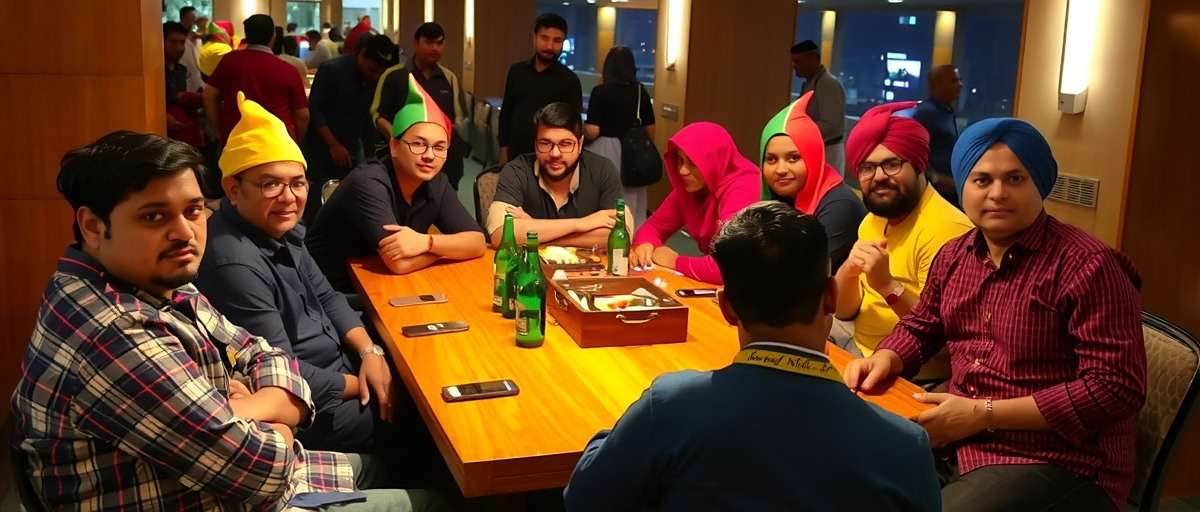
Local and Offline Events
The developers of Indian Spice War have organized numerous successful offline events across India's major cities. These events typically feature gaming competitions, spice knowledge quizzes, and opportunities to meet the development team.
The annual "Spice Conclave" has become a highly anticipated event, traveling to 12 cities in 2023. The highlight of each conclave is a live strategy competition where top players battle on a giant screen, with commentary from professional gamers and celebrity chefs who provide insights into real spice properties.
Many local communities have organized their own Indian Spice War tournaments, often held in conjunction with local food festivals. These events frequently include real spice tastings and cooking demonstrations, creating a unique blend of virtual and real-world experiences.
In 2024, the game's developers partnered with major shopping malls across India to create "Spice War Zones" - dedicated gaming areas where players can compete on large screens, participate in workshops, and win exclusive in-game items. These zones have proven particularly popular during school holidays.
Community Initiatives
Player-organized initiatives have become a beloved part of the Indian Spice War ecosystem, often combining the game with real-world benefits:
The "Spice for Life" program encourages players to donate real spices to local food banks in exchange for in-game rewards. To date, this initiative has collected over 25 tons of spices for communities in need across India.
Player-created "Spice Academies" offer mentoring to new players, with experienced strategists providing tips and guidance. These academies have helped reduce the game's learning curve and increased overall player retention.
Regional "Spice Challenges" invite players to create real dishes using the spices that feature prominently in their in-game strategies. Participants share photos of their culinary creations on social media, with the most creative dishes winning in-game prizes.
During the 2023 harvest season, the community organized "Spice Farmer Appreciation Week," highlighting the real farmers who grow the spices featured in the game. This initiative included educational content about spice farming and a charity drive to support sustainable farming practices.
Major Updates and Expansions for Indian Spice War
The development team behind Indian Spice War has maintained a consistent schedule of major updates, introducing new content and features that keep the game fresh and engaging for its dedicated player base. Here's a look at some of the most significant updates:
"Spice Route" Expansion (June 2023)
This major expansion introduced international spice trading routes, allowing players to venture beyond India's borders to trade with fictional representations of ancient civilizations like Rome, China, and Egypt. New spice types like cinnamon from Sri Lanka and nutmeg from Indonesia were added to the game.
The expansion included a new "Caravan Master" game mode focused on protecting trade convoys from bandits and rival traders. Players could establish trading posts in foreign lands, creating new strategic opportunities and revenue streams.
"Spice Route" also added historical campaign missions based on real events from India's spice trading history, including the legendary journeys of traders like Kanishka and Marco Polo's encounters with Indian spices.
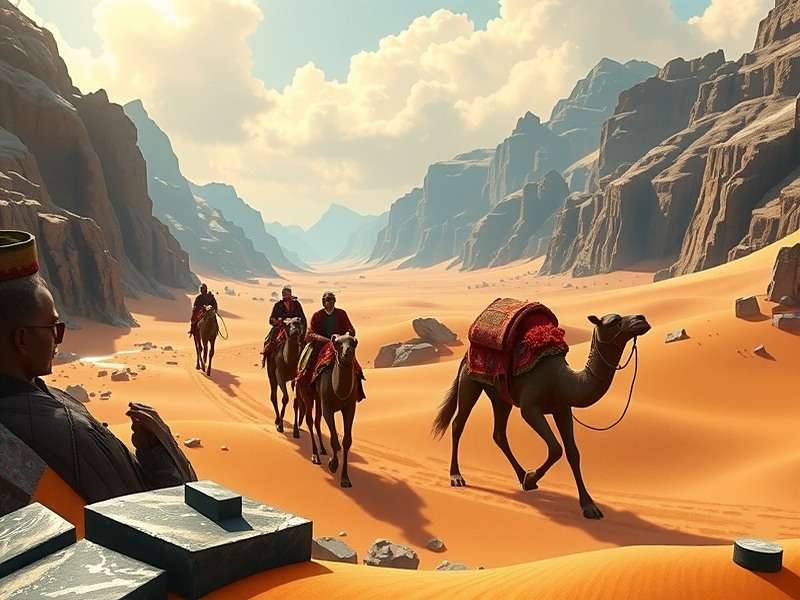
"Women of Spice" Update (March 2023)
In response to player feedback, this update introduced several new female spice characters and legendary warriors, each based on historical Indian women who played significant roles in spice cultivation, trade, and diplomacy.
New gameplay mechanics included "Alliance Queens" - special leadership roles for female characters that provided unique buffs to allied units. The update also added new campaign missions focusing on female rulers and their contributions to India's spice heritage.
"Women of Spice" was widely praised for its inclusive representation and educational content about lesser-known historical figures, with many players noting that it introduced them to important women from Indian history they had not learned about in school.
"Mystical Spices" Update (October 2023)
This popular update introduced magical and mythical elements to Indian Spice War, based on ancient Indian texts and folklore about spices with supernatural properties. New legendary units included the Cinnamon Phoenix and Garlic Naga, which quickly became fan favorites.
The update added "Mystic Shrines" to the game maps, where players could perform rituals to gain temporary but powerful enhancements for their armies. These shrines were designed based on different regional temple architectures from across India.
"Mystical Spices" also introduced a new game mode called "Riddle Battles," where players had to solve traditional Indian riddles and puzzles to unlock special abilities during combat, adding a unique intellectual challenge to the strategic gameplay.
"Festival Legends" Update (December 2023)
This update completely revamped the game's festival events, creating more immersive and culturally accurate celebrations tied to India's major festivals. Each festival received unique gameplay mechanics, storylines, and rewards.
Diwali celebrations included special "Lamp Defense" missions and fireworks that could damage enemy units. Holi events introduced color-based attacks and healing abilities. Eid featured grand market events with unique trading opportunities.
The update also added "Festival Kings" - powerful temporary characters that could be summoned during major celebrations. These characters, based on figures from festival mythology, provided massive bonuses to players who participated in the events.
Upcoming "Royal Courts" Expansion
The highly anticipated "Royal Courts" expansion, scheduled for release in mid-2024, will introduce palace politics and diplomacy as major new gameplay elements. Players will be able to interact with fictional representations of Indian kings and emperors, gaining their favor through strategic gifts of rare spices.
The expansion will add new palace-based battlefields and introduce court intrigue mechanics, where players can form alliances with nobles, uncover plots against their rule, and even arrange political marriages to strengthen their positions.
New spice types from the royal kitchens of India's historical kingdoms will be introduced, each with unique abilities tied to royal cuisine and medicinal practices. The expansion will also feature enhanced graphics for palace environments, showcasing India's rich architectural heritage.
Cultural Impact of Indian Spice War
Beyond its success as a game, Indian Spice War has had a notable cultural impact in India, bridging the gap between digital entertainment and traditional knowledge. Its unique blend of education and entertainment has made it more than just a pastime for millions of players.
Educational Influence
Schools and educational institutions across India have started recognizing Indian Spice War as a valuable educational tool. Several schools in Karnataka and Tamil Nadu have incorporated the game into their social studies and environmental science curricula, using it to teach students about:
- India's agricultural heritage and spice cultivation
- Historical trade routes and their impact on Indian civilization
- Regional cultural diversity and culinary traditions
- Medicinal properties of different spices
Teachers report that students who play Indian Spice War show increased interest in traditional Indian knowledge and better retention of historical facts. The game's engaging presentation of information makes learning about these topics more enjoyable for students accustomed to digital media.
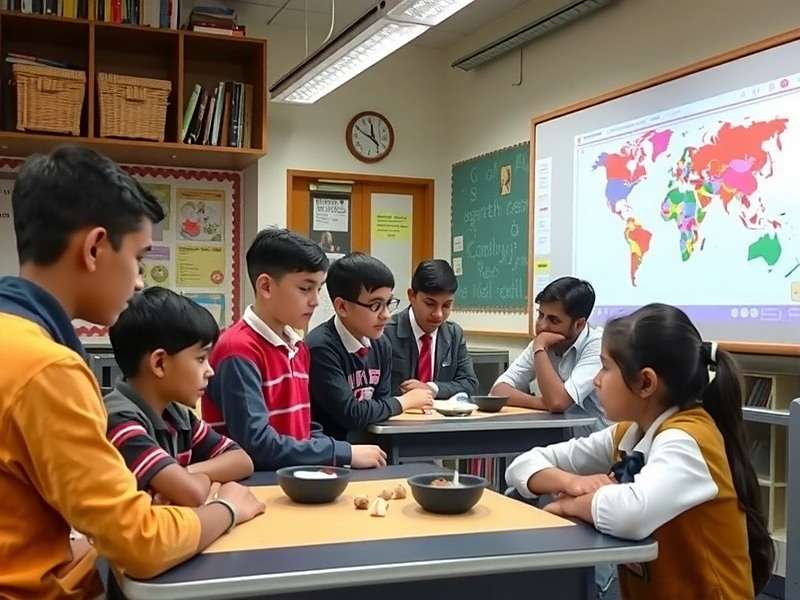
Culinary Revival
Perhaps surprisingly, Indian Spice War has contributed to a revival of interest in traditional Indian cooking among younger generations. Many players report that the game has inspired them to experiment with spices and recipes they encountered in the game.
Several popular food delivery services in India have reported increased orders for regional dishes featuring spices prominently in Indian Spice War. Some restaurants have even created "Spice War Special" menus featuring dishes that highlight the game's most popular spices.
Cooking utensil manufacturers have noted increased sales of traditional spice grinders and storage containers, with many customers mentioning that they were inspired by the game's spice management mechanics to organize their home kitchens more effectively.
Social media platforms are filled with posts from players showing their real-life spice collections alongside their in-game spice armies, creating a unique crossover between virtual and real-world interests.
Tourism and Local Economies
Regions known for particular spices featured in Indian Spice War have reported increased tourism from players interested in seeing spice plantations and historical trading posts depicted in the game. Kerala's black pepper plantations and Kashmir's saffron fields have seen particularly noticeable increases in visitor numbers.
Some local governments have embraced this trend, creating "Spice War Trails" that guide tourists to locations featured in the game. These trails often include educational components about spice cultivation and historical trade, creating a new revenue stream for local communities.
Artisans and craftspeople in spice-producing regions have started creating Indian Spice War-themed products, from hand-painted spice boxes to traditional paintings depicting scenes from the game. This has provided economic benefits to rural communities while preserving traditional crafts.
Preservation of Traditional Knowledge
Perhaps most significantly, Indian Spice War has played a role in preserving and disseminating traditional knowledge about spices that might otherwise be lost. The game's development team worked with elderly spice farmers, traditional healers, and culinary experts to ensure accuracy in their depictions of spice properties and uses.
This research has been compiled into a free digital archive available on the game's website, preserving rare knowledge about regional spice varieties and traditional uses. The archive has become a valuable resource for researchers and enthusiasts of Indian culinary heritage.
Many players have reported conversations with older family members about spices and cooking traditions that were sparked by their experiences with Indian Spice War. This intergenerational knowledge transfer has helped keep traditional practices alive in rapidly changing modern India.
This game is recommended by daman games. To discover more quality Indian games, please visit daman games.